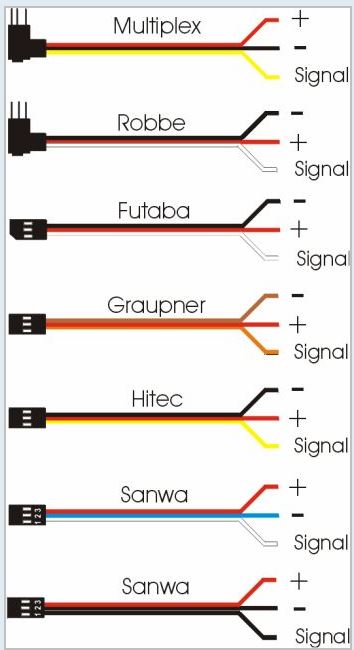Page 1 of 3
servo wires
Posted: Tue Sep 10, 2019 5:03 pm
by percy1510
Hi guys
does anybody have an understanding of how a servo works?
They have 3 wires pos, neg and signal. Pretty obvious what the pos and neg wires are for but I was thinking about the middle wire, the signal wire. my thought is that if sending an electrical pulse down the signal wire causes the servo to move then it would be possible to connect a servo to any Heng Long board? All you would need to do is connect the pos and neg to wires to the power and then the signal wire to something like the trigger wire for the bb and hey presto a servo that moves when the gun is fired so potentially a servo recoil on any Heng Long board with no aftermarket parts??
I am probably completely wrong as no one has come up with this before and I don't really know how a servo works but its an idea
What are your thoughts?
Re: servo wires
Posted: Tue Sep 10, 2019 5:08 pm
by Max-U52
For Servo recoil you have to give the servo two commands, one to recoil and one to return to battery. A Servo will only do exactly what you tell it to, that's why they have that little board in the airsoft recoil turrets. That little board first tells the servo to retract and then it tells it to return to battery.
Re: servo wires
Posted: Tue Sep 10, 2019 5:10 pm
by silversurfer1947
I would point out that the signal wire is NOT the middle one. It is either the white one or the yellow one, depending on the colour combination used by your servo.
Re: servo wires
Posted: Tue Sep 10, 2019 5:14 pm
by Max-U52
For every Servo cable that I've ever seen, the middle wire is positive.
Re: servo wires
Posted: Tue Sep 10, 2019 5:25 pm
by percy1510
thanks for the input gents. So my theory is that a servo connected with the pos and neg wires to give it power. Then a pulse down the signal wire would make the servo move in one direction. If you were going to use this as a recoil mechanism then maybe a spring could be used to return the servo to its start position?
Re: servo wires
Posted: Tue Sep 10, 2019 9:02 pm
by Jofaur86
Hello

Principe finctionnement servo
https://fr.m.wikipedia.org/wiki/Servomoteur
Nrmalisation selon marques

- IMG_5475.JPG (48.07 KiB) Viewed 2681 times
Re: servo wires
Posted: Tue Sep 10, 2019 9:14 pm
by jarndice
That is a useful table which is now on my Favourites list, Thank you.
Re: servo wires
Posted: Tue Sep 10, 2019 10:32 pm
by General Jumbo01
There are servos and servos....
The type typically found in our budget tanks and trucks are no more than small motors that drive a set of reduction gears before they mesh with a spur type gear, be it a turret ring, an elevation motion etc. You can, at best, control the speed and direction of travel. This requires just two power wires.
A full hobby spec servo works very differently. The small gear on the top of the servo can travel both clock and counter clockwise over a limited sweep of, typically, around 80-100 degrees. The two power wires power the servo motor and the signal wire tells the servo at what point as in degrees it should position the gear (which typically has a servo arm fitted to it). The servo will typically self center if controlled by a self centering stick control but if controlled by a rotary control it can be set and left in a desired position. It can also be controlled by a channel using a switch where two positions can be assigned. The control of the servo can customised by the transmitter settings too, depending on what is provided.
I know this is all old hat to experienced RC hobbyists but may be news and of help to those who have entered tanking via static modelling.
Re: servo wires
Posted: Wed Sep 11, 2019 1:34 pm
by Max-U52
Well, this has been a learning experience for me. This is the first time I've ever seen Servo wires where the middle cable was negative, but then, my only RC experience is with tanks and trucks. Good stuff, guys.

Re: servo wires
Posted: Wed Sep 11, 2019 1:44 pm
by General Jumbo01
I'm thinking aloud here, but providing the position of the signal wire is standard, does it matter if the polarity of the servo motor wires are reversed? Presumably the servo will just reverse its direction, in which case you just use your transmitter settings to 'reverse' the servo back?
Otherwise simply unclip the two power cables from the servo plug and reverse them instead.